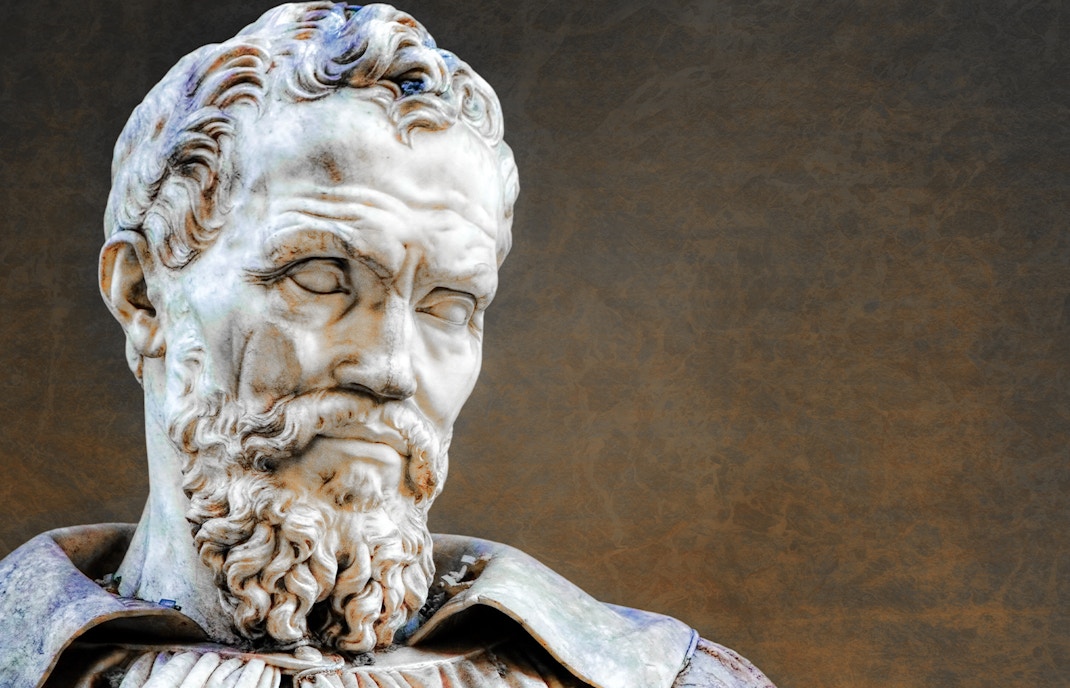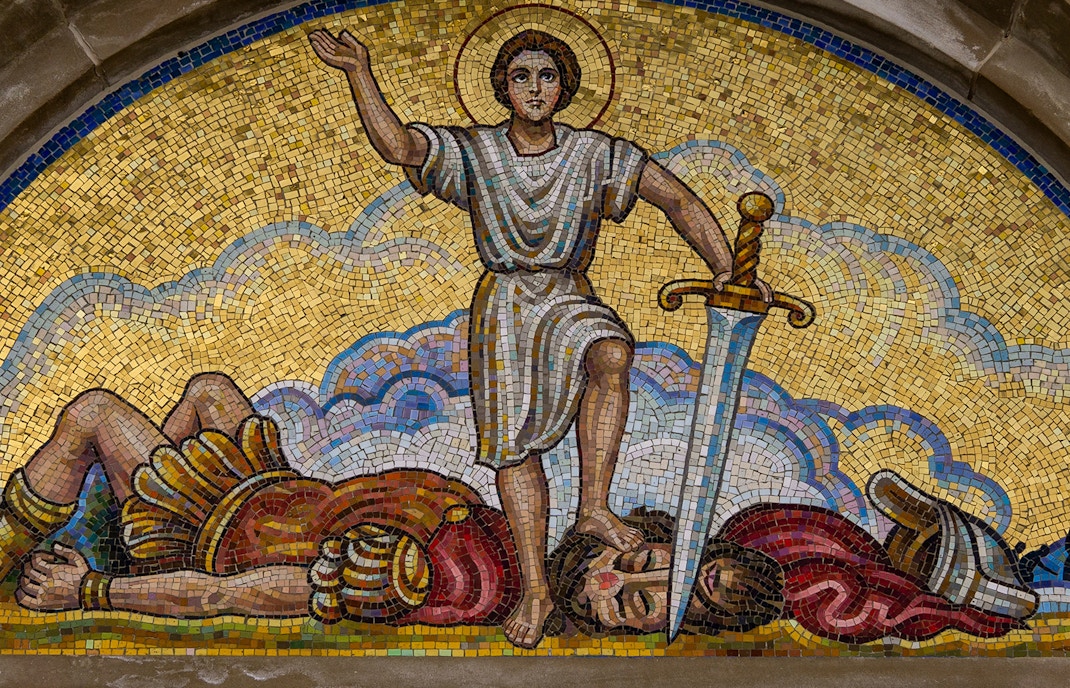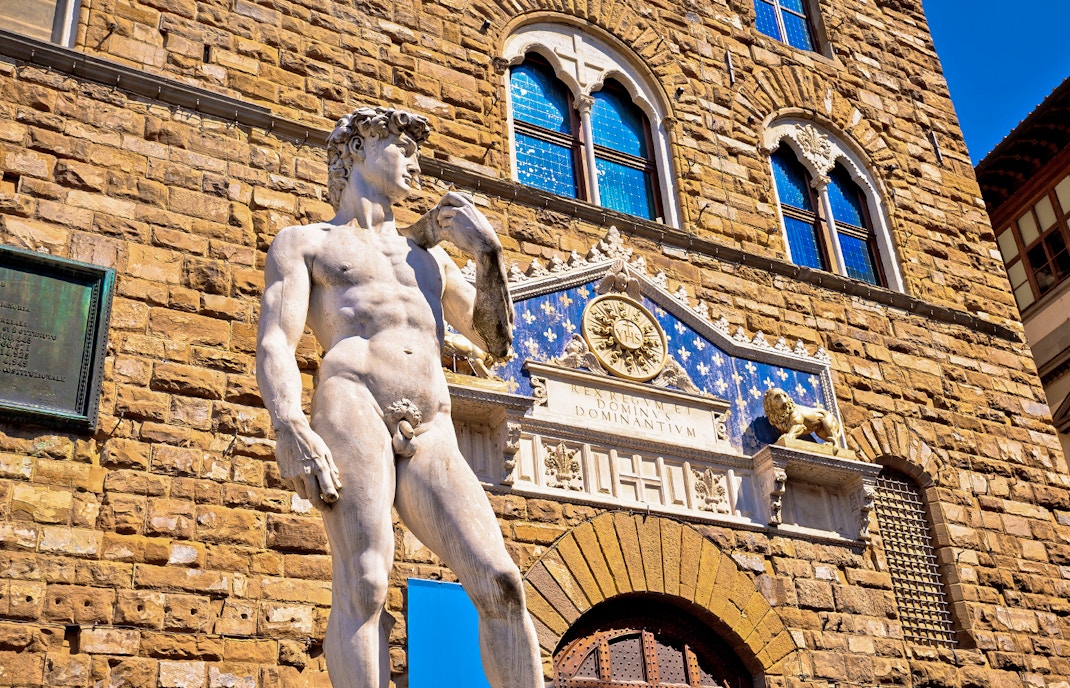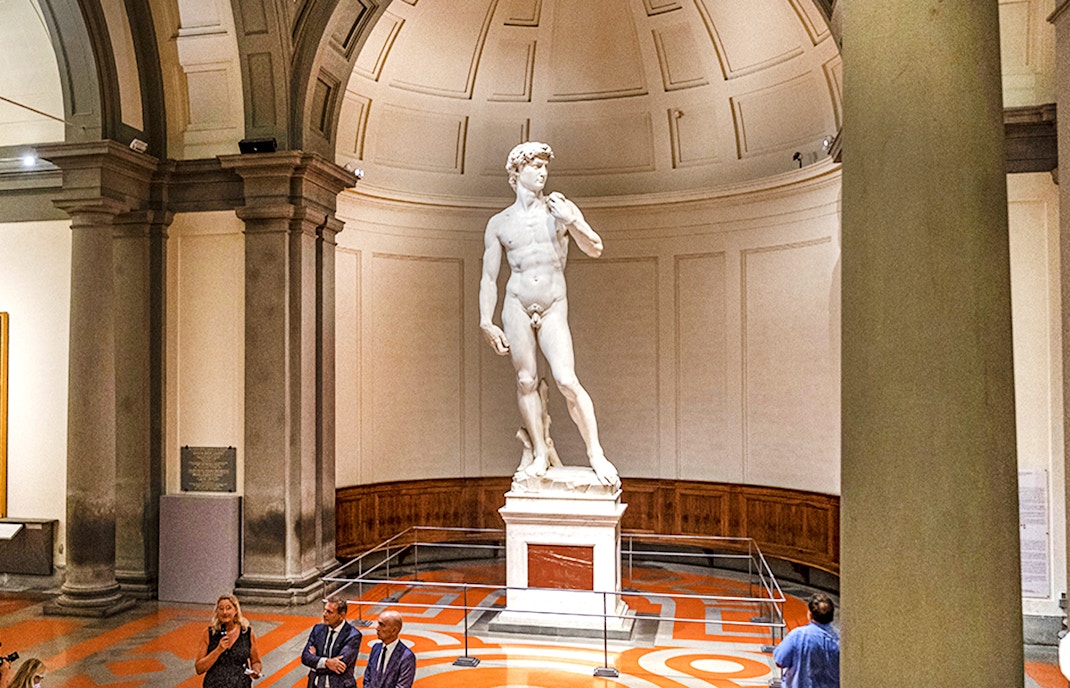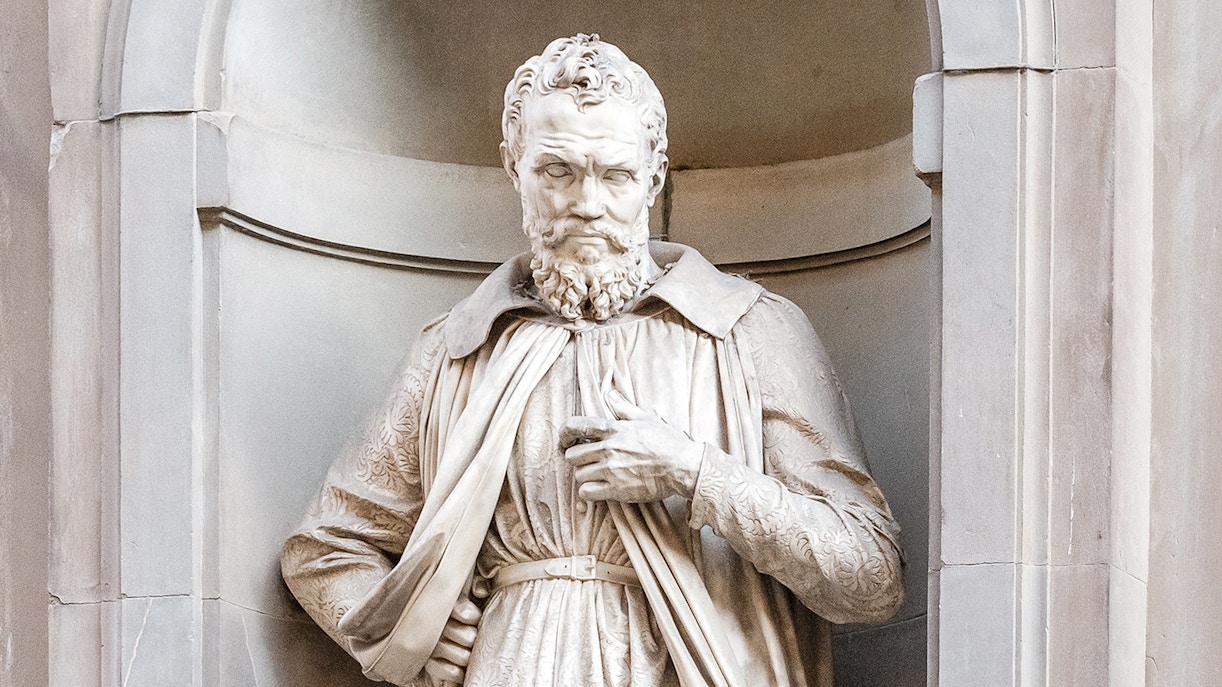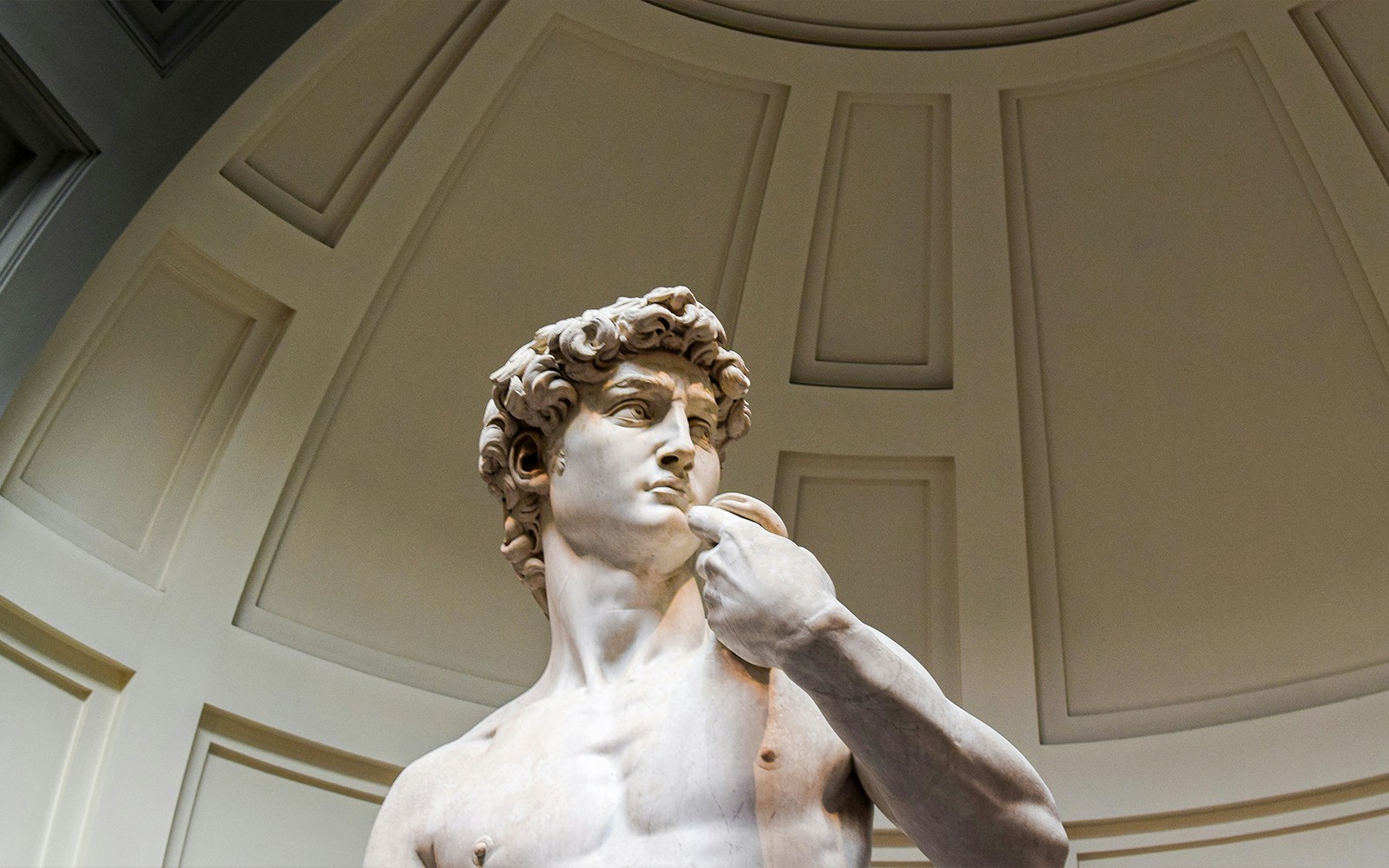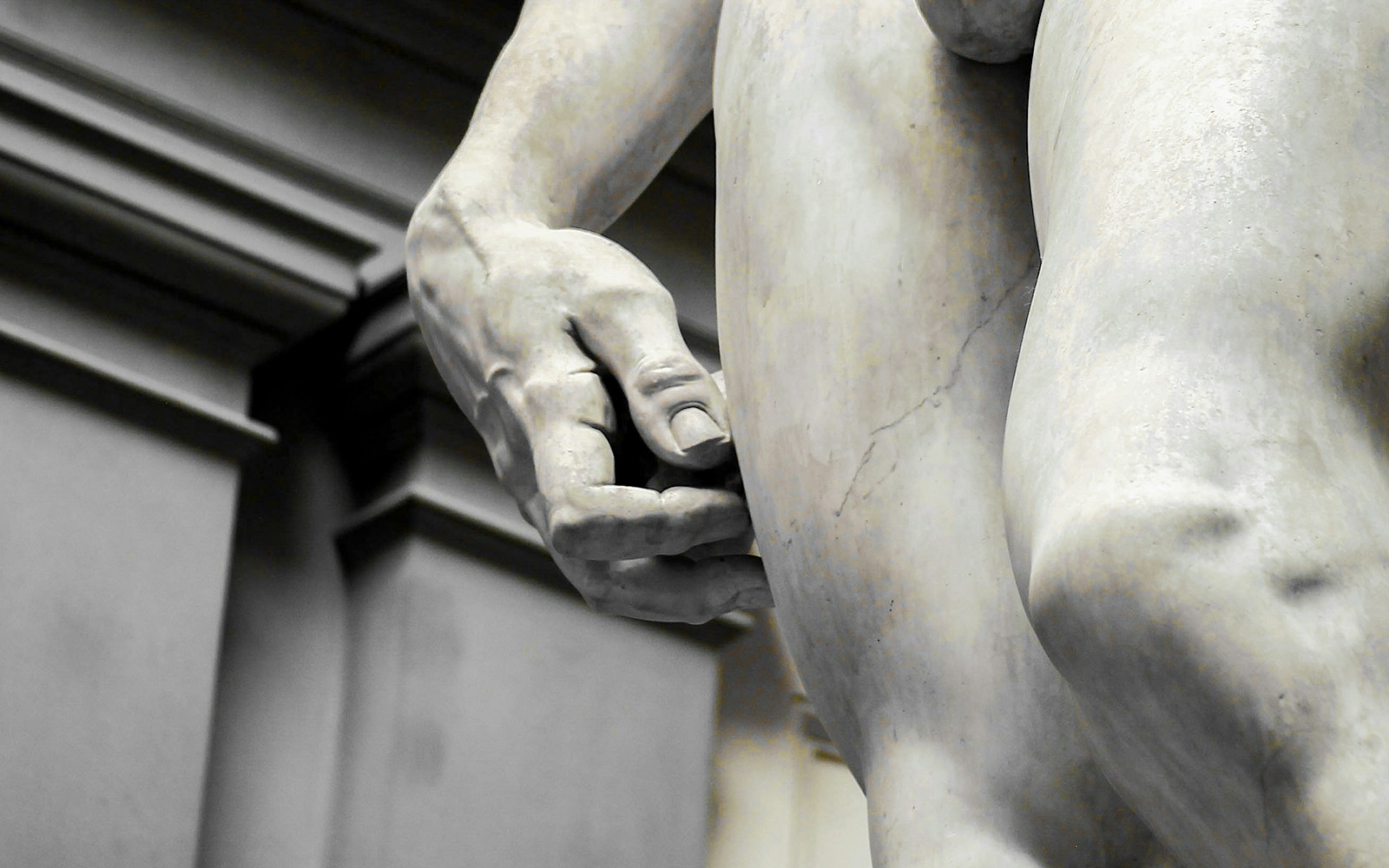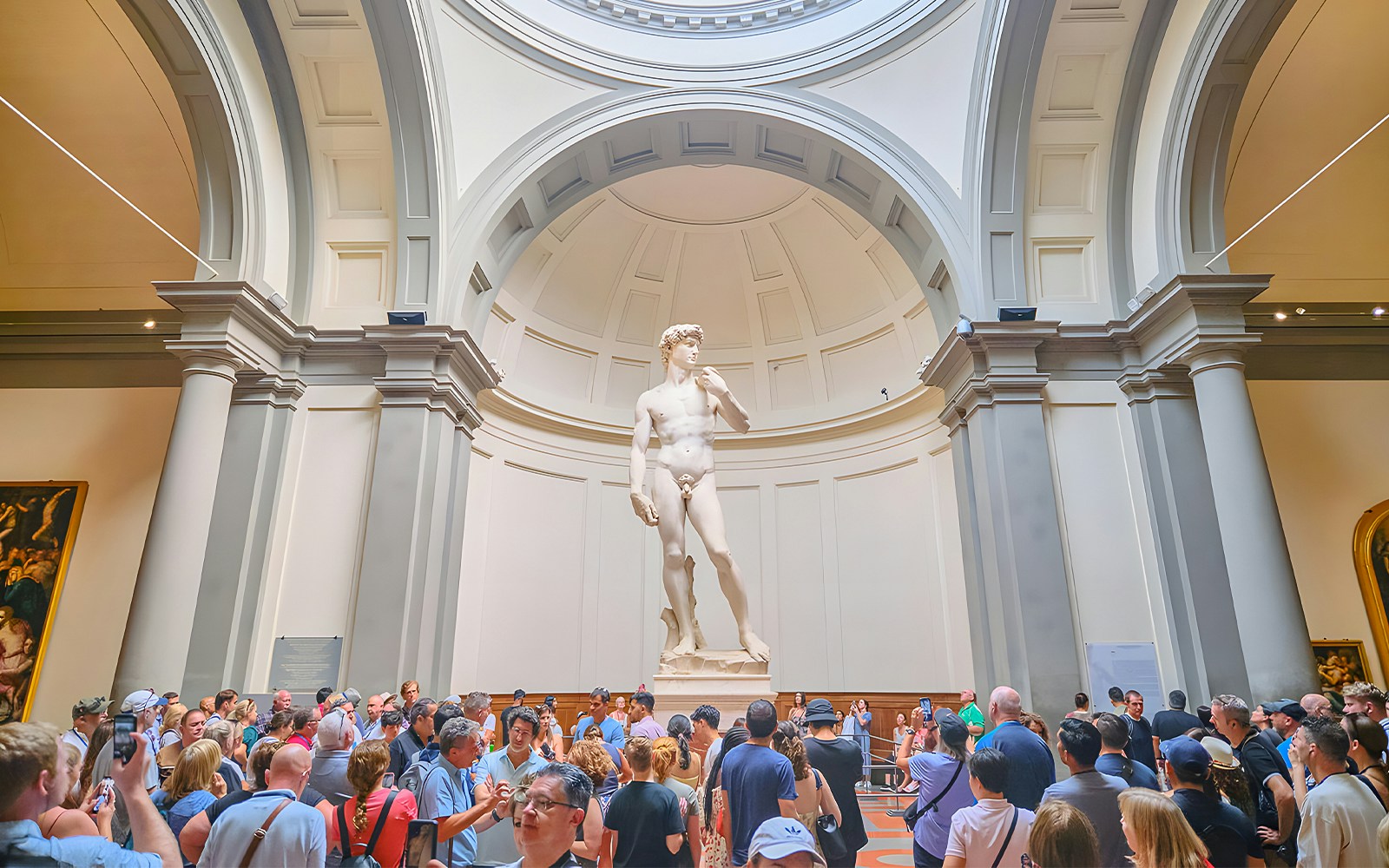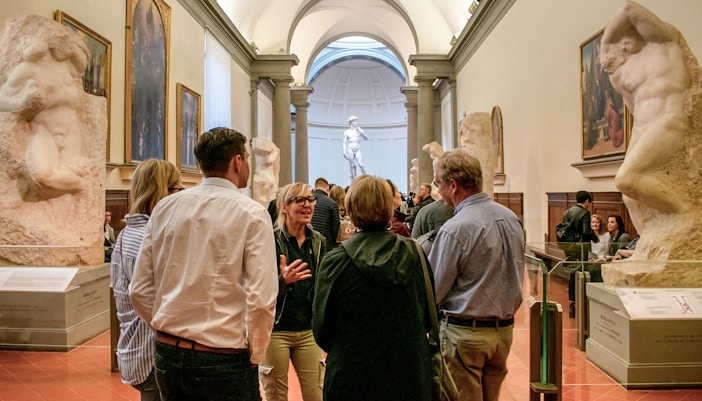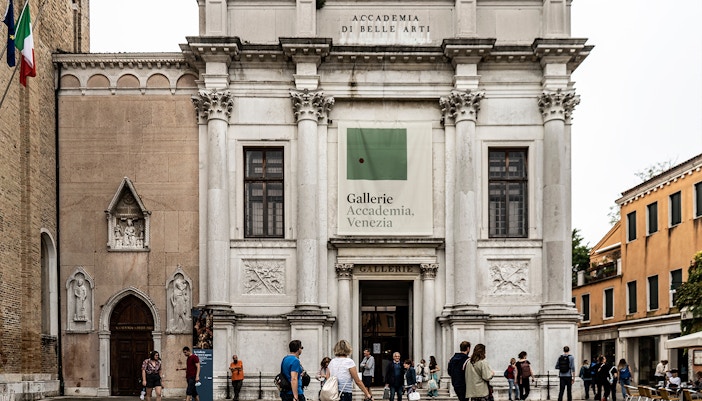Michelangelo’s Statue of David is housed in the Tribune Hall of the Accademia Gallery in Florence, Italy—a room custom-built in the 19th century by architect Emilio De Fabris to spotlight this iconic masterpiece.
Located on the first floor, the circular Tribune is bathed in natural light from a skylight above, allowing for a striking 360-degree view of David in all his grandeur. The gallery is centrally located and easily walkable from key Florence landmarks like the Duomo and Piazza San Marco.
📍 Go early (8:15–9:30am) or late (after 5pm) for fewer crowds and clearer views.

